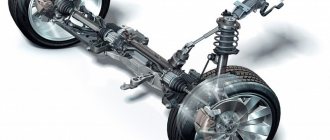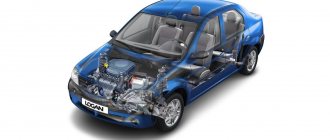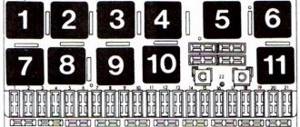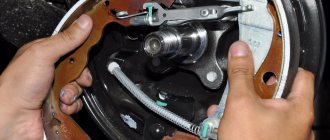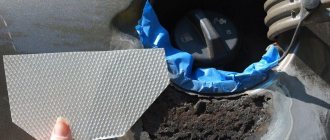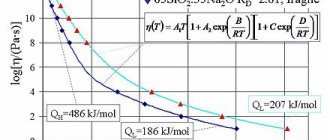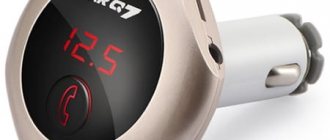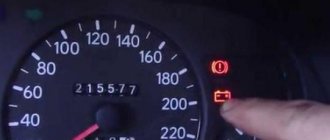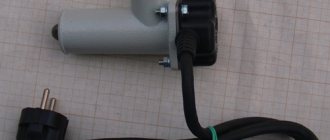In the winter season, after parking for the night, getting into a car is not very comfortable: frosty windows, cold seats and an icy steering wheel do not improve your mood at all. Every day, a huge number of car owners are forced to spend time warming up the car interior in winter, and everyone has their own favorite way to do this, which, unfortunately, is not always correct.
Every driver's mistakes
There are common, typical misconceptions that are passed down almost from generation to generation.
One of them is to immediately turn on the stove at full power after starting the engine. This measure is practically useless, because the car was left in severe frost for a long time, which led to the cooling of the antifreeze. In such a situation, the engine will warm up much more slowly than in the warm season, since the heat will immediately be spent on warming up the air inside the car.
Another fairly common mistake is to direct air flow onto the windshield at full power, which can lead to cracks due to sudden temperature changes. To avoid such a problem, the correction of which will require financial costs, the glass must be heated evenly: the frost will melt on its own when the air in the cabin warms up.
How to heat?
Now let's figure out how to use the heater in a car. The most important thing, and not only in winter, is to guarantee traffic safety.
So, you approach a car covered in snow and completely frozen since yesterday evening. First of all, you should clean the gap between the driver's door and the body, otherwise snow will get on the seat. He will literally be sucked inside when you start to open the door. Next, you should start the engine and immediately turn on the air flow from the heater to the windshield, setting the maximum temperature. At the same time, you should not be afraid of classic winter glass cracks. After all, the windshield will warm up quite slowly along with the engine. And only if you have a car with an electric heater built into the heater, you should not select the maximum temperature on the control unit.
But if the car has electric glass heating, then you need to turn it on immediately and at full power. The main thing, I implore you, is not to start driving with half-cleaned glass. Especially in sunny weather, when the ice on the glass plays with thousands of small “diamonds,” literally blinding the driver. In a word, clean the glass with a scraper, special aerosol defrosters, warm “anti-freeze” brought from home... But from a place with opaque glass - no, no.
So, we wait until the windshield is cleared and only then do we start moving. At the same time, the engine continues to warm up, and its heat should be enough to uniformly heat the entire interior of the car. You can direct some of the heated air down to your feet. It is useful to do this not only to prevent the lower extremities from freezing, but also to dry the car mats, on which in winter the snow-water porridge takes up more and more volume. And wet carpets mean fogging up the windows, and generally a nasty atmosphere in the car interior.
On vehicles that have manual heater fan speed control, there is no point in using a speed higher than second when warming up in winter. The air will not have time to heat up when passing through the heat exchanger of the heater. There will be a lot of noise and a draft, but the air enters the cabin barely warmed up. In addition, this mode will slow down the warming up of the engine, which is harmful both for it and for the microclimate in the cabin. Until a modern engine with a fuel injection system warms up, its crankshaft speed will be slightly increased, reaching 1500 -1800 rpm. Then the speed will begin to decrease on its own, down to idle. And if we are forced to wait for the windshield to defrost while sitting in the cabin, then it is useful to maintain a slightly increased engine speed, but not more than 2000 rpm. However, if you are parked in the courtyard of a residential building, then you should not smoke again. It’s better to drive slowly, even at the lowest speed. And the engine will warm up faster, and heat will enter the cabin earlier, and you won’t cause any discomfort to your neighbors.
How to quickly warm up a car interior in winter
How to properly warm up the interior to make it comfortable to be in?
It’s easier for everyone for owners of cars with climate control: if configured correctly, the system will automatically warm up the interior without driver intervention. As a rule, it first starts at low speed, then redirects slightly warm air to the windshield, and, last but not least, to the feet.
Is it possible to turn on the heater on a cold engine? Yes, but the fan speed should be minimal; it should be increased as the air temperature inside the machine rises. Do not turn the air flow speed switch to maximum when the needle just leaves the zero mark.
How to keep warm in a car without a heater? In this case, the heating system for the steering wheel, seats and rear window, which are a very noticeable source of heat, can help.
Some features of the operation of stoves of various brands
There are dozens of brands and hundreds of models on the market, but there are only a few truly unique designs. Below, brands are grouped based on similar oven control techniques.
How to properly turn on the built-in oven in a modern electric stove Bosch, Siemens, Samsung, Electrolux
The sequence of actions for Bosch, Siemens, Samsung, Electrolux stoves is as follows:
- select the required cooking mode: heating temperature and baking duration;
- set the desired value on the temperature regulator;
- place the dishes with food at the required height and close the door tightly;
- set the cooking time on the timer;
- follow the indicator on the panel for the remaining time, if the recipe requires intermediate actions with the dish: turn over, pour over the sauce, add ingredients;
- At the end of cooking, when the timer signal sounds, you should remove the dishes with the prepared dish and clean the cabinet of dirt as soon as possible.
If you leave cleaning until later, food particles and splashes of fat and sauce will cake, forming a hard-to-remove residue.
How to safely turn on and off an Ariston and Indesit gas oven
Gas ovens Ariston and Indesit are distinguished by their affordable price and at the same time high quality and safety in operation. With any ignition method - automatic or manual - you must make sure that gas combustion has started and is stable. In models with piezo ignition, simply turn the control knob to the maximum temperature zone and press it.
Autonomous interior heater
A much more effective way to quickly warm up the air in the cabin is to install a heater that can operate without the engine.
Autonomous heaters are in demand, first of all, among drivers who often have to spend the night in the car (truck drivers, tourists, travelers), because sleeping with the engine running, especially if it is diesel, is an unsafe activity. The main function of such devices is to heat the interior, which can be carried out both before starting the power unit and directly while driving.
An autonomous heater will not only help warm up the interior faster, but also save fuel and not waste battery power. On average, modern heaters consume 200 ml of fuel per hour, that is, for a whole night of continuous operation, consumption will not exceed 2 liters (for example, when idling, a 3.0-liter diesel engine will burn about 9 liters in the same time). Having a compact size, such a device is located directly in the cabin without taking up much space.
Additional interior heater
If the standard stove does not produce enough heat, you can resort to using an additional heater that runs on antifreeze.
Such a heater, in fact, is a backup to the main heating system of the vehicle: the fan and heat exchanger of the device are built into the cooling system of the car. Heaters are available in different sizes and power, so you can choose a unit for any car.
When using the device, it is necessary to take into account that the lack of air flow from outside can lead to fogging of the glass.
This question is asked by many motorists, especially those who do not have much experience. Who wants to sit in a cold, frozen cabin? Let's look at how to properly use a heater in winter.
Turn on the stove correctly
If you start the engine while the heater is already on, this can lead to the following problems. This often happens if the driver has installed an autostart in his car. It’s a pleasant thing to leave the house and immediately get into a warm, heated car. But in the end, starting the engine with the heater on can lead to breakdown. So imagine that in the winter you were left without a normally working heater and were in need of repairs.
Also, do not turn on the heater immediately after starting the engine, especially if it is freezing outside. Heating occurs because the antifreeze in the cooling system gives off heat. As soon as you start the engine, it is cold and cold air will blow into the cabin. So what's the point of turning on the heater to fill the cabin with cold air? There is simply no point in turning on the heater until the engine warms up. So let the engine develop and only then turn on the heater. And then you will heat the interior much faster. The engine must reach operating temperature.
Algorithm for proper engine warming up
Car owners often make a common mistake: after parking the car for a long time, they start the engine and then turn on the heater to maximum, which, in their opinion, should heat up not only the engine, but also the air in the cabin. However, in reality, in such a case, the load on the engine increases significantly, which reaches the minimum temperature regime for a long time.
The speed of warming up the engine and the interior are interconnected. At the same time, you need to understand that it is possible to ensure the flow of warm air into the cabin only when the engine is hot. Effective heating of the engine and interior is possible only when the coolant warms up to the required levels, after which hot antifreeze is supplied to the heater radiator, which allows you to quickly heat the interior of the car.
Modern cars can be equipped with several heating systems, programmable electronic climate, as well as one, two or three-zone heaters. Often car owners do not read the instructions for their car, which detail how to use such heating, how to properly warm up the car and how long this procedure takes on average.
According to statistics, in winter, when the outside temperature is minus 10 degrees, heating the engine usually takes 15 minutes, and it takes 30-35 minutes to raise the temperature in the cabin. Whereas in winter we often warm up the car for at most 5 minutes, which is spent on cleaning the windows from ice. After which the car owner sets off on a virtually cold engine, which leads not only to increased fuel consumption, but also to serious wear and critical breakdowns of the power unit.
To properly warm up the engine of a car, you need to set the heater fan intensity switch to minimum, then start the engine and leave the car running for at least 10 minutes. With the heating circuit closed, the engine quickly heats up; as soon as the coolant temperature begins to rise, you can start driving the car, simultaneously turning on the heater and heating the interior of the car itself. If your car is equipped with a Webasto heater or autostart, you can immediately turn on the heater at maximum power, quickly warming up the car interior.
Let's sum it up
In winter, it is extremely important to properly warm up the car, which not only reduces fuel consumption, but also prevents increased wear and critical engine malfunctions. With such a mileage, you will need to start the engine, setting the heater control to minimum efficiency, or completely turn off the interior heating. This will allow you to warm up the engine faster, only after this you can turn on the interior airflow, and warm heated air will immediately begin flowing from the air ducts.
05.11.2019
Choosing the right mode
Many of our drivers are in a hurry. To quickly heat up the interior, they not only rush to turn on the stove, but also immediately select the hottest mode. Only under this condition will part of your interior be fiery and part cold. Will you feel comfortable with such changes? It’s unlikely - your body will be hot and your feet will be cold. How not to catch a cold.
Use deflectors correctly. The best option is to let the heat into your feet first. Warm up for a couple of minutes, then direct part of the air to your legs, part to your windshield. This way you can definitely avoid cracks on your windshield.
Also take into account such a moment as the blowing force. There is no need to immediately turn on the maximum mode on a cold stove. Everything should happen gradually. Start with first speed, like on a box.
Power selection
Another common mistake car owners make is maximizing the furnace power when starting it up. Drivers mistakenly believe that in this case the car will warm up faster.
The maximum mode increases the flow rate of heated air entering the cabin. As a result, energy is distributed unevenly. The area opposite the duct becomes hot. And the remaining zones remain unheated for a long time. If a person is in his car at the same time, he risks getting sick. Because a very dangerous temperature contrast is created. The heat from the stove forces the driver to get rid of his outer clothing. But there are still very cold areas around it.
Dangerous contrast
The temperature difference during sudden, powerful heating of the car can create a threat not only to humans, but also to the car itself. In this case, the hot flow can cause cracks to form on thoroughly frozen glass. To avoid damaging them, you first need to direct the heat to the lower part of the cabin using deflectors. Then to medium, so that the car warms up evenly and gradually - from the floor to the roof.
You should start with the lowest setting of the stove. After a few minutes, move on to the next one. And the most powerful option is to launch it last.
What about climate control?
If your car has this wonderful modern option, let's look at how climate control works in winter. Select the temperature on the display that is optimal for you. If you have a sophisticated climate system, for example, three-zone climate control, then you can select the appropriate temperature for both the driver and front passenger, and for those riding in the back seat.
What should you warm up?
Modern drivers love comfort very much, so they install additional options on their cars, for example, heated seats, windshields, etc. Even in a cold interior, heated seats allow you to immediately feel comfortable. It is turned on immediately after the engine is started.
If one stove is not enough, especially in large cars, an additional heater is installed for passengers. Often placed in minibuses, as well as taxi drivers and drivers of heavy trucks.
Still, the stove is an extremely important element in a car in winter. You cannot drive your car without a properly functioning heater. This is both a guarantee of your health and your safety.
Quite often people wonder how to properly turn on the heater in a car in winter. After all, at sub-zero temperatures, an unheated cabin is very uncomfortable, and under certain conditions this can lead to health problems. If you use the heater incorrectly, you can get completely different problems, which is also not very good. note
that warming up the interior should be considered only in conjunction with other actions to bring the car into working condition. Using the stove correctly, you will increase the level of comfort in the cabin.
How to turn on the heater in your car in winter? Knowing the answer to this question will allow you to prevent many problems. Most often, if the heater is turned on incorrectly, the windshield cracks. Probably everyone has seen long cracks along the deflectors on the torpedo, the reason for this is the incorrectly selected operating mode. Also among the consequences of incorrectly switching on the heater is uneven heating of the interior.
. Sometimes, a problem may arise with the performance of the stove. Therefore, it makes sense to study all the main nuances.
How to turn it on?
The first mistake that drivers make is starting the engine with the heater on. This can lead to two problems at once:
- Car owners who use autostart often sin like this. They like to come straight to a warm salon, but the possible disadvantages outweigh all the positive aspects. You should not start the engine with the heater on unless you want to get it repaired, which is not very pleasant in winter.
- The next point, which is also a mistake, is that the stove is turned on immediately after starting the engine. Especially if it’s a serious minus outside. There are several reasons to consider such actions simply useless:
- Only the running engine has not yet gained momentum, and is unable to support the operation of powerful energy consumers. Therefore, you can often observe that when you turn on the stove within the first 10 seconds after starting, the motor begins to wither;
- Heating occurs by heat transfer from antifreeze located in the cooling system. Immediately after starting the engine, it is cold, so heating is of no use. Also, do not forget that at first the coolant circulates in a small circle, that is, around the engine. As a result, a heater turned on until the engine has warmed up to operating temperature is simply useless.
Ways to turn on the oven
There are two main types of ovens:
- Gas. They are cheaper, do not require special utensils, and the prepared dishes have a familiar taste. Food bakes faster in them. They do not waste electricity.
- Electrical. High fire safety, no possibility of explosion. More precisely, they maintain the set temperature. Ideal for baked goods. Characterized by high electricity consumption.
Built-in oven – meat temperature control
How to properly light the oven in a modern gas stove
Before lighting your gas oven, you should carefully read the user manual. Particular attention should be paid to the “Safety Rules” section.
Depending on the configuration of a particular model, it may be equipped with an automatic ignition device or manual ignition. All gas stoves must have safety systems that interrupt the gas supply when the burner flame goes out.
If there is electric ignition, you just need to turn the control knob and press it, turning on the ignition. The knob must be held down for at least 15 seconds. This is done in order to prevent children from accidentally turning on the burner and in the event that someone passing by simply touches the handle.
If the gas stove model is budget and is equipped only with manual ignition, then you will have to arm yourself with matches or a kitchen lighter. The sequence of actions is as follows:
- open the door, wait half a minute;
- free both hands;
- Light a match or lighter with one hand and bring it to the ignition hole
- with the other hand, press and turn the oven switch knob, hold it pressed until the flame appears;
- after a fire, keep the handle pressed for another 15-30 seconds (depending on the stove model) for the safety system to work;
- make sure that the burner operates smoothly, without gusts of flame or pops;
- close the door and warm up the cabinet.
Electric oven
Electric ovens can be built into the body of an electric stove, or they can work as a separate device. They all have similar control systems and safety systems. Using such devices is much simpler than gas ones, since there is no risk of gas leakage, fire or explosion. However, such devices have another damaging factor - electric current. A malfunction of the device can result in either serious injury or fire. Therefore, it is strictly unacceptable to use faulty electrical appliances.
Important! If sparking, the smell of burnt wiring, or other signs of malfunction appear, the device must be immediately disconnected from the power supply.
Before turning on the electric oven, you must ensure that it is in good working order. Separately, you need to check that water or other liquid that could cause a short circuit or ignite when heated does not get into the cabinet. You need to turn on such cabinets by turning the knob to the required temperature.
Advanced models require pressing a separate “start” button. Sometimes such a button is integrated into the mode switch. Most electric models are equipped with a timer that turns off the heating after a set time.
Pies in an electric oven. Top – grill
Climate control features
Now, more and more cars have this option. So let's see how it works in winter. Be sure to set the climate control. Otherwise there will be no sense from it. Choose the optimal temperature that suits you completely. As a rule, this element has additional keys for controlling mechanical components. We are interested in the “ recirculation in the cabin”
", sometimes it may be called differently, but its meaning remains to block access to outside air into the cabin. This will significantly speed up the heating process inside. If the car is working properly, the process will calmly take place automatically. Pay attention to his work. The intensity of the heater is constantly increasing, this must be taken into account when warming up the interior in manual mode.
Additional devices
To achieve greater comfort, many cars are equipped with heated seats. This allows you to avoid freezing to the seat even in an unheated cabin. You can turn it on immediately after starting the engine. This will ensure a sufficient level of comfort. Sometimes, drivers install an additional heater in the cabin. It can operate either from a small engine installed in the engine compartment or from the mains. It makes sense to install such a device if there is a need for long-term parking in winter with the driver in the cabin. Taxi drivers and truck drivers often use such solutions.
Conclusion
. The heater in a car is an important element that allows you to use the vehicle safely and comfortably. Therefore, the question of how to properly turn on the heater in a car in winter arises. Indeed, in this seemingly simple question there are a large number of nuances. Only careful adherence to them will avoid problems, as well as maintain the health of the driver and passengers in order.
How to light an oven
Any equipment is supplied by the manufacturer with instructions with prescribed operating rules. Before starting work, it is better to spend a few minutes studying than to repair equipment later. It is important to note that gas and electric ovens have different switching principles, heat up at different speeds and require far from the same amount of time to cook food.
Ovens have different ignition methods.
In a gas stove
A gas oven can have two types of ignition - electric and manual. In the first case, the flame appears without human intervention, which is more convenient and safer. Electric ignition can be automatic (using one button) or mechanical, when gas start and ignition are carried out by various control mechanisms.
The gas oven can be turned on either manually or automatically.
A distinctive feature of all modern stoves is the presence of a “gas control” function - the gas supply is automatically shut off if the flame goes out.
In an electric stove
An electric oven is considered safer and easier to use - to “start it” you just need to insert the plug into the outlet and set the regulator to the desired temperature setting. After cooking, the regulator must be returned to position “0” and the oven must be disconnected from the electrical network. The internal surface can only be cleaned by de-energizing the device!
The electric oven is turned on most simply by turning the knob.
It should be taken into account that during operation the oven becomes very hot, so it is not recommended to touch it - you can easily get a thermal burn.
